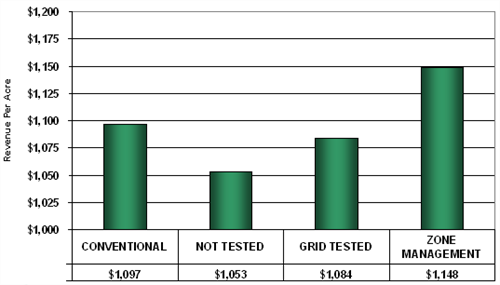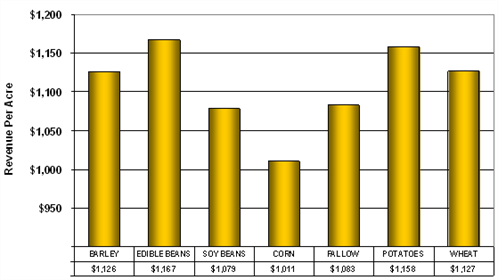541 - Early Grain Harvest Provides Opportunities
The small grain harvest should start and finish 2-4 weeks earlier in 2010 than some recent years. The early harvest will provide an opportunity to complete many additional field work operations this year. Benefits should be improved crop yields and on-farm profit.
Benefits of an Early Grain Harvest
- Opportunity to complete drainage plans that may have been delayed
- Opportunity to install tile drainage
- Opportunity to manage high volume of small grain residues before planting in 2011
- Opportunity to expand profitable zone soil sampling and variable rate fertilization programs
- Opportunity to optimize fall seedbed tillage operations to minimize spring tillage and enhance stands in 2011
Zone Fertility Management Pays
- Zone fertility management increased revenue by $51/acre
- Maximizes fertilizer use efficiency
- Maintains or increases quality
- Maintains or increases tonnage
- Improves fertility management throughout the rotation to maximize other crop yield and quality
Figure 1. Impact of Soil Test and Fertilization Method on Revenue
Per Acre 5 Year Summary (2005-2009)

Soil Analysis Method
Crop Rotation Strategies for Profit
Choice of a crop rotation sequence will have long term impact on yield, quality, and revenue of each crop. The crop planted previous to sugarbeets will often significantly impact revenue per acre when the field is planted to sugarbeet, Figure 2.
Key Factors Impacted by Crop Rotation Sequence
- Incidence and severity of diseases
- Residue management and tillage requirements
- Residue management and planter operation
- Residue amount and C:N ratio impact nitrogen management
- Previous crop length of growing season affects stored soil water availability
- Incidence and severity of springtails, wireworms and cutworms
Figure 2. Yield and Quality of Sugarbeet Following Various
Crops in Rotations 5 Year Summary (2005-2009)

Preceding Crop
Tips for Crop Rotation Management
- Small grains reduce Rhizoctonia
- Following corn presents nitrogen management and stand establishment challenges
- Rhizoctonia incidence and severity increase after edible bean, soybean, or corn
- Fallow or prevented plant fields are often colder, wetter and present nitrogen management challenges
- Valor carryover can occur if used as a desiccant on edible beans
- Weed pressure is often highest after potatoes
Watch for a map of RRV disease severity that will greatly aid in variety selection for 2011. Available in September.
Remember to contact your agriculturist for specific questions regarding previous crop affects on disease, insect problems and nitrogen fertility management.
